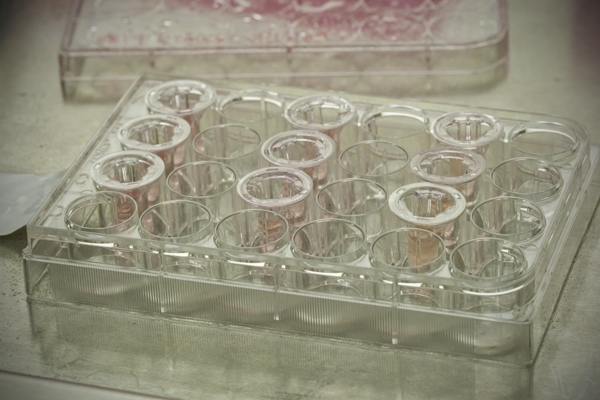Some of you may have heard about liquid bandages. They come in little bottles and can be applied like clear nail polish onto wounds. These liquid bandages are generally made of some sort of polymers in liquid form that dries into a layer that keeps out bacteria and other pathogens from the wounds. In 2006, researchers at MIT produced a type of liquid bandage that also contains peptides. This type of liquid bandage has promising applications in surgery and field injury treatments by rapidly stopping bleeding. This type of liquid bandage works by releasing amino acids that are vital to producing proteins important to closing wounds and helps promote healing.
Today, even more effective types of liquid bandage-like material are being produced. Recently, a team of researchers at Brigham and Women’s Hospital, lead by Dr. Ali Khademhosseini, have discovered a type of protein containing gel that act like elastic tissues when exposed to light. In the past, hydrogels (material that act like human tissue) required toxic chemicals to activate or could not be absorbed successfully. However, Dr. Khademhosseini’s team had produced a new type of material that they call “photocrosslinkable elastin-like polypeptide-based hydrogel” (ELP). ELP is activated when it is exposed to light instead of toxic chemicals. Upon activation, ELP forms strong links with itself, creating a powerful tissue-like mesh, accelerating healing in cuts and lacerations. The research team has also found that ELP seems to be absorbed by the body without any evidence of toxic reactions.
Image Source: Gregor Schuster
The research team says they hope to see use for ELP in clinical settings to stop bleeding. Beyond the ability to stop bleeding, ELP is envisioned to act as a scaffold for growing cells in a petri dish that can be injected to promote tissue growth, or as a sealant to create a powerful gel barrier over wounds. Currently, ELP has yet to be tested on humans, but it holds great promise for the future.
Feature Image Source: hydrogels by Bryan Jones










